CAA News Today
Environment in Practice: Artmaking through Crisis
posted by CAA — May 10, 2018
The following article was written in response to a call for submissions by CAA’s International Committee. It is by Frederico Câmara, artist and independent researcher, Sydney, Australia.
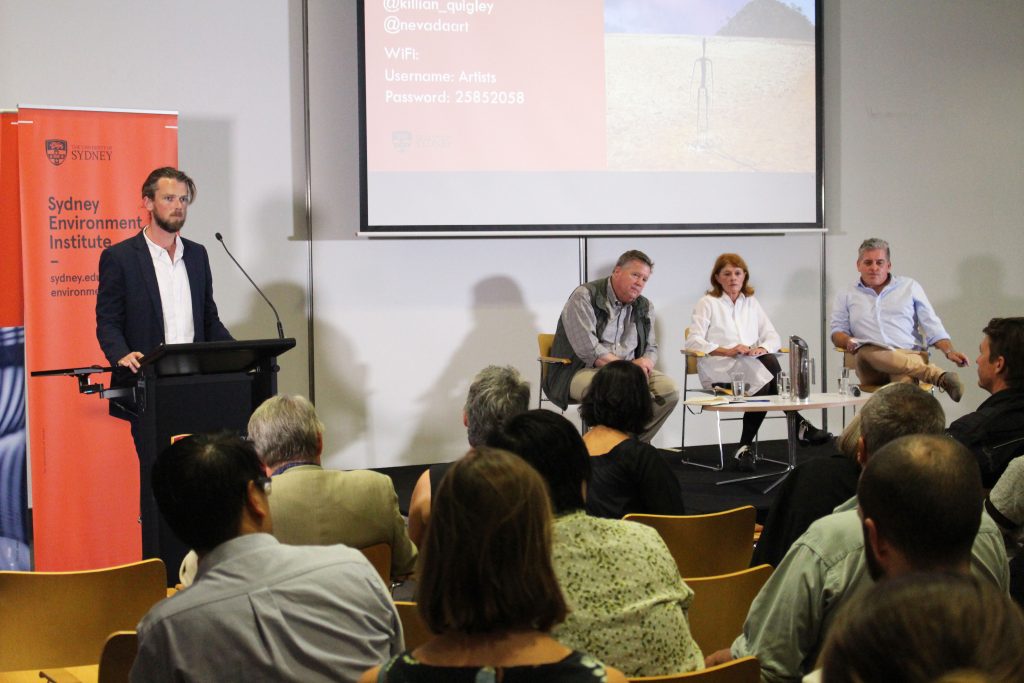
Fig. 1. Researcher Killian Quigley chairing a conversation between Bill Fox, Janet Laurence, and Ian Maxwell at the event Artists Have Never Been More Important, at the University of Sydney. Photograph: Eloise Fetterplace
Something very important for the planet is happening in Australia. As the Great Barrier Reef suffers from coral bleaching, and scientific evidence of global warming accumulates, the Sydney Environment Institute (SEI) raises the question: What can artists do in response to environmental crises?
The SEI at the University of Sydney addresses key environmental questions through discussion, research, and collaborations between artists, scientists, and humanists. This article discusses two recent international art events hosted by SEI to illustrate their work.
The first was held on March 27, 2018, at the University of Sydney. It featured William (Bill) L. Fox, Director of the Center for Art + Environment (CA+E) at the Nevada Museum of Art in a dynamic conversation with artists and members of the public on why “artists have never been more important”. This program was followed the next day, March 28, by the conference Environment in Practice: Artmaking Through Crisis, which gathered environmental activists, visual and sound artists, photographers, writers, musicians, and theater artists showing a wealth of artistic production that originates from, celebrates, and ultimately cares for the natural environment. In both events, participants were invited to exchange ideas on individual and communal artistic strategies to deal with the pressing environmental issues of today, through art.
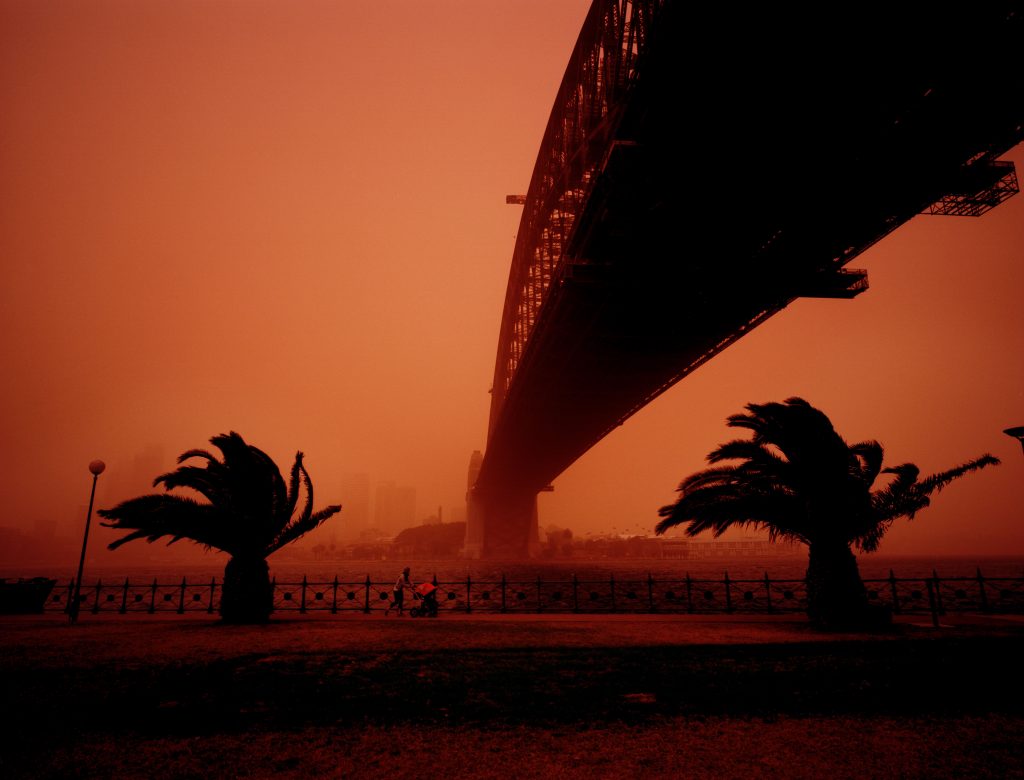
Fig. 2. Dean Sewell / Oculi, El Niño (ongoing). Photograph.
Bill Fox’s talk, Artists Have Never Been More Important, was a masterclass on artists working with the environment—as material, site, and subject—from well-known examples of American Land Art, to more environmentally conscious, if less spectacular, responses to various challenges involving humans and the natural world. It was interesting to note that those different approaches are not a sequential progression from one to the other. Both happened in the past, and are still happening now. Fox also introduced the work of the CA+E, an institution that collects the archives of artists working with the environment, and promotes research in the field. He concluded by proposing the idea of the artist as a bridge between scientists who collect evidence of climate change, and politicians who create and implement environmental policies. A lively conversation ensued with responses from artist Janet Laurence, theater theorist Ian Maxwell, SEI postdoctoral fellow Killian Quigley, and the audience, with one of its members arguing for a broader, less limited role of art in addressing the many crises that afflict our environment (Fig. 1).
This criticism is reflected in what the convenors called the “instrumentalization” of art in their introduction to the conference, questioning how artists will respond to the various invisible signs of environmental crises that defy representation and narration, including rises in temperatures, changes in the chemistry of oceans, and the scale of geological time. What are the possibilities for artmaking through environmental crises that will not reduce artistic practice to an instrument for the communication of scientific findings? Are artists capable of formulating their own questions, designing their own methods (including the collection of data during fieldwork), and producing and disseminating new knowledge and art that will criticize, reimagine, honor, and shape the world into a better place?
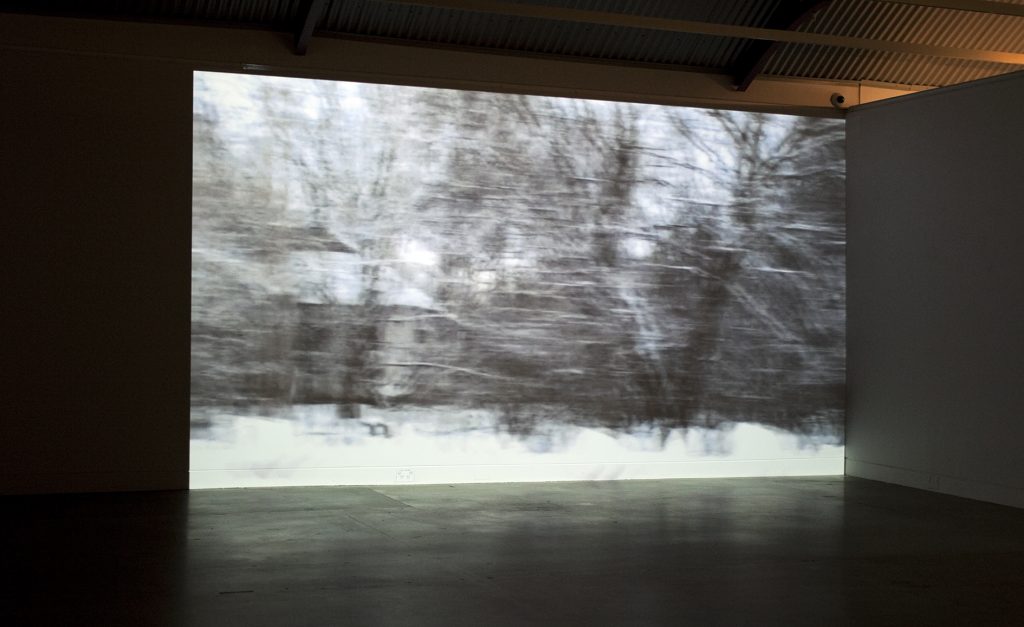
Fig. 3. Merilyn Fairskye, Fieldwork II (Chernobyl), 2009. Single-channel video, silent, 100 minutes.
The conference featured four thematic sessions, each one including artists working with a multitude of topics and methods. Session 1: “How Do Images Act,” began with David Ritter, CEO at Greenpeace Australia Pacific, who discussed the importance of images in the service of environmental activism and the challenges in using photography in an image-saturated world. He described his collaboration with photographer Dean Sewell who presented works at the conference on environmental issues affecting his native Australia and beyond (Fig. 2). The last speaker in this session was Merilyn Fairskye, an artist who travels the world in search of nuclear sites. She presented Fieldwork II (2009), a work filmed in Chernobyl that conveys the invisibility of nuclear evidence through the uncanny effect of movement at the level of pixels (or atoms?), as a symptom that that landscape is ill (Fig. 3).
Session 2: “Engaging Extremity,” started with sound artist Philip Samartzis presenting sounds that he documented during two scientific expeditions to Antarctica, creating an “overlooked” sound ethnography of the Australian presence on that continent. David Burrows then showed his stereoscopic photography in installations that transpose the Antarctic landscapes into the urban fabric of the city or the desert, demonstrating the idea of environmental unity where, apparently, there is none. Film theorist Belinda Smaill responded by remembering the participation of artists in the early navigations of discovery, linking their work to a contemporary, though decolonizing, environmental practice.
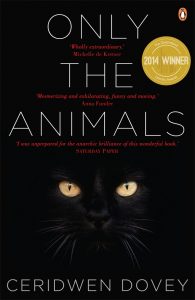
Fig. 4. Ceridwen Dovey, Only the Animals. Published by Penguin Random House Australia.
In Session 3: “Surpassing Humans,” writer Ceridwen Dovey presented her short story collection Only The Animals (2014), in which animals narrate their own deaths as a result of human conflicts, an exploration of the voice and consciousness of animals and a tribute not only to animals but also to other authors who have used a similar strategy (Fig. 4). Poet Judith Beveridge read two of her poems, highlighting the importance of metaphor as a tool for exploring relationships between humans and nature, and engendering in her readers a sense of wonder of the natural world. As she described it, she writes poetry “to give the natural world centrality” in an era of anthropocenic extinction.
In Session 4: “Composing Loss,” Genevieve Campbell, musician and music researcher, presented the project Ngarukuruwala – We Sing Songs, a musical collaboration with a group of senior song-women on the Tiwi Islands of Australia that emphasises the links between people, culture, and the land, and the need for preservation of both natural and cultural landscapes. Michelle St Anne performed My First Memory, a gripping monologue exploring the artist’s first memories and sensations of images, sounds and smells, to reflect on the domestic environment of her family home, perhaps as a metaphor for the natural environment as our collective home, and its disruption through conflict (Fig. 5).
The conference concluded with a discussion chaired by Killian Quigley on the possibilities for future developments and possible outputs. As the feminist and LGBT theorist Annamarie Jagose pointed out in her welcome speech, the conference itself, with its presentations and discussions, constituted one of the many forms that art can take as a practice that deals not only with the plights of the natural environment, but also recognises its capacity for wonder through beauty.
A full program and biographies of the speakers can be found here.
Podcast: Artists Have Never Been More Important
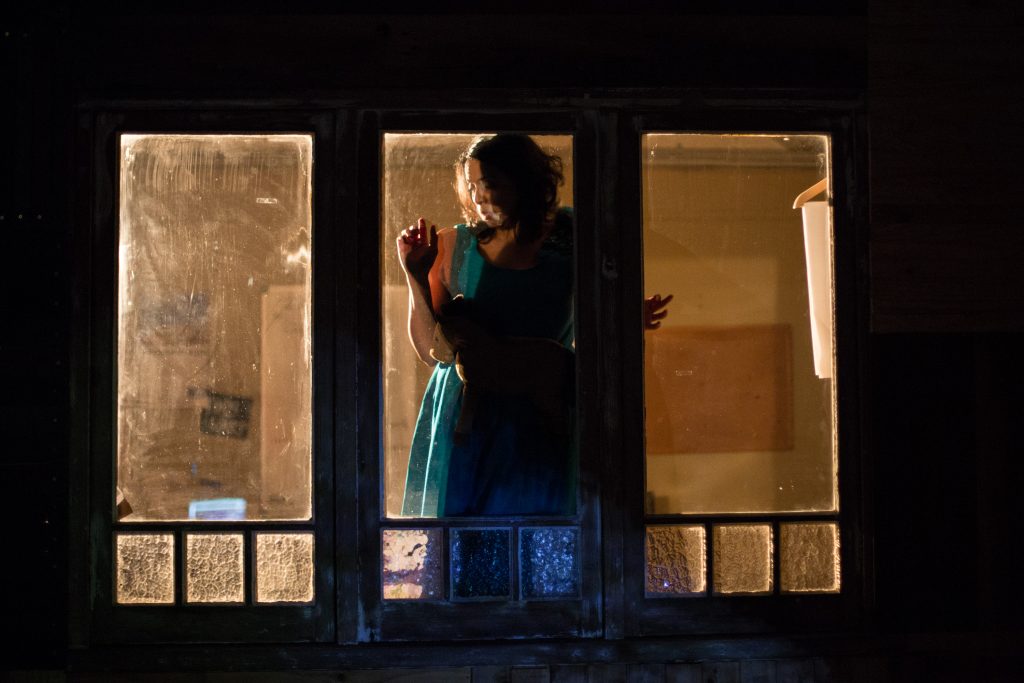
Fig. 5. Michelle St Anne performing “My First Memory” in I Love Todd Sampson (redux) at 107 Projects, Sydney, Australia. Photography: Clare Hawley
Two Sessions at February’s CAA Conference Introduced Topics for the Next International Congress for the History of Art (CIHA)
posted by CAA — March 29, 2018
Paul B. Jaskot, professor of art, art history, and visual studies at Duke University, contributed the following article about upcoming opportunities for CAA members to participate in international art history conferences. Professor Jaskot is a member of the National Committee for the History of Art (NCHA) and a past president of CAA (2008-10).
At the 2018 CAA Annual Conference in Los Angeles, two exciting sessions addressed the theme of international “mobilities” in art history, presenting new research related to Brazil and Italy (and their artistic diasporas). Organized by members of the National Committee for the History of Art (NCHA), each session took up the general topic of mobilities, which will be the organizing concept for the upcoming International Congress for the History of Art. The congress is sponsored by the International Committee of the History of Art (CIHA), of which NCHA is the US affiliate. NCHA acts as representative body to connect the international committee’s work with CAA and its members to sustain the global exchange of art historical work.
In an unusual format, CIHA has approved two official conferences—together comprising the International Congress—developing this theme in order to emphasize the nature of movement and art over time and space. The 2019 meeting will take place in Florence, Italy, and the 2020 meeting will convene in São Paulo, Brazil.
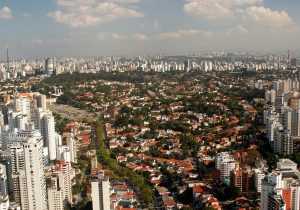
São Paulo, Brazil. Photo: Ana Paula Hirama/Flickr, via Wikimedia Commons
In the same spirit, NCHA decided to sponsor two sessions at the CAA Annual Conference to raise awareness of the upcoming conferences as well as begin to develop US participation. The first session, chaired by Jeanette Favrot Peterson, was entitled “Mobilities: Brazil and Beyond” while the second session, chaired by Elizabeth Cropper focused on “Mobilities: Italy and the New World.” The Brazil session featured Brazilian speakers (including representatives to CIHA) on topics that particularly interpreted mobility as migration in/through Brazil, from the ancient world through contemporary art history and across diverse media. In a complementary but distinct emphasis, the Italian session centered on spatial representations and movements of objects and individuals between Italy and the Americas; like its counterpart, the session had an expansive chronological focus and range of media, from maps to Modernist architecture. In both cases, the sessions emphasized the importance of scholarly exchange between US art historians and the international community, a crucial goal of CIHA, NCHA, and indeed CAA itself, especially through the work of its International Committee and the CAA-Getty International Program.
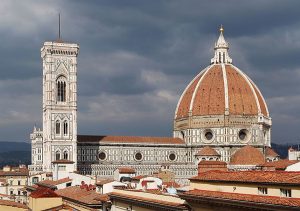
Florence, Italy. Photo: Felix König, via Wikimedia Commons
Art historians interested in these exchanges can get involved now with the ongoing dialogue. The Call for Chairs for the Florence CIHA 2019 conference has been posted and is open to all (Deadline: April 15, 2018); the Italian Committee has chosen the theme of “Motion: Transformation” as its interpretation of the broader focus on mobilities. The chair selection will be followed by a Call for Papers in Fall 2018. The Brazilian Committee will first issue a Call for Sessions between October and December 2018; the Call for Chairs will be issued in February 2019; the Call for Papers will take place between May and August 2019 with the final program being posted in October 2019. NCHA is developing programming for the CAA 2019 Annual Conference to advertise these conferences and encourage US participation. Stay connected with NCHA and check out the CIHA website for further information! We will continue to post updates in CAA News as well.
CIHA is the oldest continuously held art history conference in the world. In addition to its congresses held every four years, it also sponsors colloquia: more focused gatherings around particular art historical themes that are sponsored by its national committees. On November 27-30, 2018, India will be holding its first colloquium on the topic of “Art, Design, and Society.” Note that the Call for Papers closes May 7, 2018, so there is still time to participate in this conference. Following this, Japan will be organizing another colloquium in 2019 titled “Towards the Future: Museums and Art History in East Asia.” More information will be available as details are finalized. As the colloquia and the congress indicate, there are many opportunities for US art historians to get involved with these international exchanges of ideas.
Meet the 2018 Travel Grant Recipients
posted by CAA — December 05, 2017
CAA offers Annual Conference Travel Grants to graduate students in art history and studio art and to international artists and scholars. Meet this year’s recipients below.
CAA TRAVEL GRANT IN MEMORY OF ARCHIBALD CASON EDWARDS, SENIOR, AND SARAH STANLEY GORDON EDWARDS
Established by Mary D. Edwards with the help of others, the CAA Travel Grant in Memory of Archibald Cason Edwards, Senior, and Sarah Stanley Gordon Edwards supports women who are emerging scholars at either an advanced stage of pursuing a doctoral degree or who have received their PhD within the two years prior to the submission of the application.
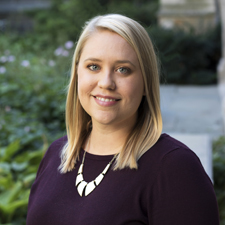
Ashley Dimmig, University of Michigan
Woven Spaces: Building with Textile in Islamic Architecture
“Into the Fold: Nineteenth-Century Ottoman Fabric (and) Architecture”
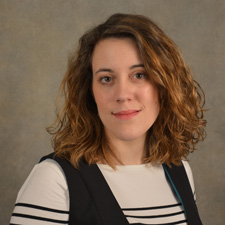
Sandra Gomez Todó, University of Iowa
Unruly Women in Early Modern Art and Material Culture
“‘But ev’ry Woman is at Heart a Rake:’ Sartorial Agency and the Disruptive Female Masquerader in Lady Elizabeth Chudleigh’s Iphigenia”
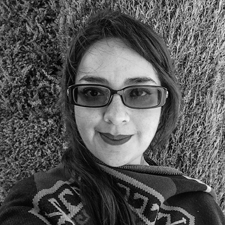
Tania Vanessa Alvarez Portugal
De-centering the “Global Renaissance.” Encounters with Asia and the Pacific Rim
“A Mexican Tarot? A 1583 Deck of Mexican Playing Cards”
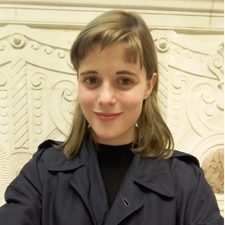
Emilie Anne-Yvonne Luse, Duke University
Avant-Gardes and Varieties of Fascism
“A Modern Pax Romana: Christian Universalism, Fascism and the Neo-Humanist Aesthetic of Waldemar George”
CAA GRADUATE STUDENT CONFERENCE TRAVEL GRANTS
CAA awards Graduate Student Conference Travel Grants to advanced PhD and MFA graduate students as partial reimbursement of travel expenses to the Annual Conference.
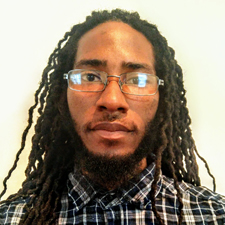
Mensah Bey

Allison Renée Dunavant
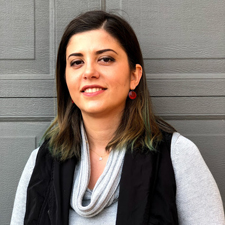
Ezgi Isbilen
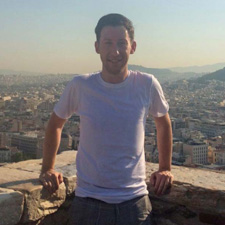
Steven Lemke
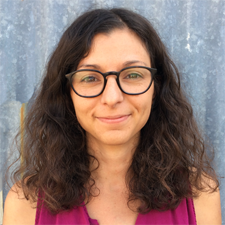
Kimberly Lyle
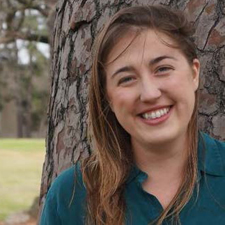
Kelly McClinton
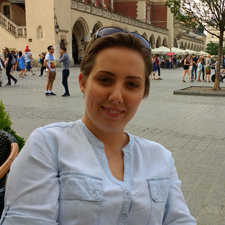
Maja M. Michaliszyn
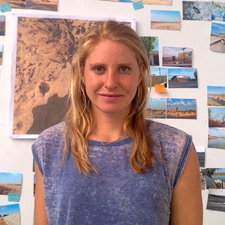
Hollis Moore
CAA INTERNATIONAL MEMBER CONFERENCE TRAVEL GRANTS
CAA awards the International Member Conference Travel Grant to artists and scholars from outside the United States as partial reimbursement of travel expenses to the Annual Conference.
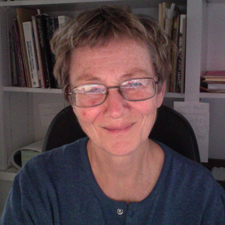
Pamela Gerrish Nunn
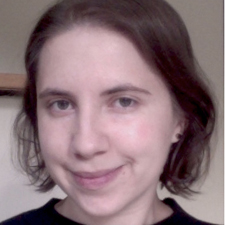
Erin McClenathan
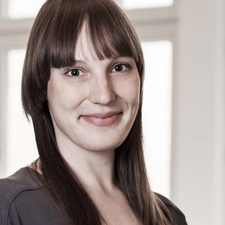
Friederike Schäfer
SAMUEL H. KRESS FOUNDATION CAA CONFERENCE TRAVEL FELLOWSHIP FOR INTERNATIONAL SCHOLARS
Recognizing the value of first-hand exchanges of ideas and experience among art historians, the Kress Foundation is offering support for international scholars participating as speakers at the 2018 CAA Annual Conference. The scholarly focus of the papers must be European art before 1830. Kress recipients will be announced in January 2018.
CAA-GETTY INTERNATIONAL PROGRAM
Every year since 2012, the CAA-Getty International Program has brought between fifteen and twenty art historians, museum curators, and artists who teach art history to attend CAA’s Annual Conference. This program is funded on an annual basis by the Getty Foundation. Click here to meet the CAA-Getty International Program participants.
Africa at the Quai Branly Museum and the Mohammed VI Museum for Modern and Contemporary Art: Challenges for Exhibitions of African Art
posted by CAA — November 16, 2017
Colette Apelian, an art historian based in Rabat, Morocco and Los Angeles, California, was invited to submit the following article by Pearlie Rose S. Baluyut, a member of CAA’s International Committee. Apelian holds a PhD in art and architectural history and an MA in Islamic studies from UCLA.
Do museums fail visitors and benefactors when they allow the use of objects to present what many might consider selective histories and definitions of identities? The answer may well be yes, a response that struck me after I visited Picasso Primitive or Primitive Picasso (Picasso Primitif) at the Quai Branly Museum (Musée du Quai Branly; MQB) in Paris, France (March 28–July 23, 2017) and Africa in the Capital City (L’Afrique en Capitale) at the Mohammed VI Museum for Modern and Contemporary Art (Musée Mohammed VI d’Art Moderne et Contemporain; MMVI) in Rabat, Morocco (March 28–July 31, 2017).
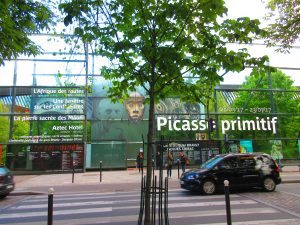
Quai Branly Museum façade. Photo by author.
At the MQB, what can be described as Pablo Picasso’s peccadillos were vaulted as examples of artistic genius and the result of his contact with African artifacts. As visitors walked through the exhibition, they could see Picasso’s art and writings, or reproductions thereof, juxtaposed with African masks, sculptures, and seminude postcard representations of Malinke and Sudanese women. The exhibition included objects Picasso collected, viewed in the Trocadero Ethnography Museum, and/or traded with fellow, mostly male, artists. Curatorial wall texts and a brochure in French and the occasional English explained how Picasso’s figural abstraction defined modern art.
Still, the exhibition could have used more clarification. I wondered why, especially in light of displays in other Parisian museums, the MQB thought visitors would find the Picasso-great-man and artist myth appropriate. The privileging of Picasso and his primitivism in an undefined modern art history was underexplained. Most of the nude bodies and, according to wall texts, the “disfigured” “monster” faces he created were predominantly of females with apparently unremarkable lives or histories beyond Picasso’s use. The suggestion that Picasso made tableaus of stylized penises in response to his exposure to African statues with erect phalluses did not seem to adequately explain his fascination with human sexuality.
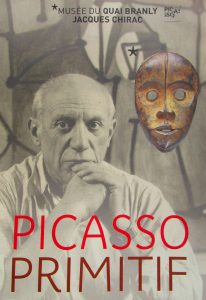
Picasso Primitive brochure cover detail. Photo by author.
Perhaps odder still was how the MQB left unpacked and decontextualized the notion of the primitive. The museum’s (and/or Picasso’s ?) definition all but ignored the history of this term and, as such, the discourse about it and the Other. In so doing, the show affirmed yet again an ethnocentric characterization of the MQB that James Clifford, among others, criticized the museum for entrenching after its 2006 opening. (See James Clifford, “Quai Branly in Process,” October, Spring 2007, 3–23.) The effects of refusing to detangle and define primitive were compounded by the relative lack of wall and brochure text explaining the history, circumstances of acquisition and display, and the socioreligious significances of most masks and statues shown or referenced in the exhibition. It was compounded by the MQB not sufficiently clarifying the sociopolitical and economic contexts in which Picasso traded images of unclothed Africans and created and sold art. In the 2010 Spectacular Art of Jean-Léon Gérôme exhibition at the J. Paul Getty Center in Brentwood, California (June 15–September 12, 2010), visitors learned that Gérôme’s prurient Orientalism was cultivated in relation to the contemporary European marketplace. The perhaps unintended impression that Primitive Picasso organizers hoped to titillate for monetary profit at the expense of the Other was accentuated by the absence of a similar analysis, if indeed the artworks on display were created for public, not private, consumption. Consumption was also underclarified.
More explanation was additionally necessary in the wall texts and brochures for Africa in the Capital. The largest section of the show was staged in the museum named after the king of Morocco, Mohammed VI. Here, visitors walked through rooms of paintings, sculpture, and photography that, according to one brochure, celebrated African creativity, African identity, African culture, the African art scene, and, in the case of at least one artist, humanity removed from racial identifiers. Exhibition materials informed us that the works of art were created by North and/or sub-Saharan Africans, including artists born and/or living off the continent. One example is the Moroccan-French photographer Leila Alaoui, who died shortly after a 2015 Burkina Faso terrorist attack while she was on assignment for Amnesty International. She was born in Paris and resided and worked in Europe, the United States, and Morocco. Alaoui, with her strong sense of injustice and interest in immigration, would probably note that the ability of some artists to easily move across borders is an elite privilege, an important distinction I could not find in exhibition materials. I could also see little discussion about the influences and significance of living and making art in diaspora cultures. The contradictions of an exhibition that was meant to celebrate diversity, yet included artists based upon ancestry alone, appeared lost on the organizers.
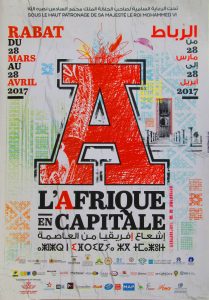
Africa in the Capital brochure cover. Photo by author.
Though the organizers intended Africa in the Capital City to celebrate African identity and creativity, the March 2017 opening and governmental support suggests an ulterior motive: to publicize Morocco’s reentry into the African Union (AU), made official in January 2017. The membership signifies a majority of AU member states’ acceptance of Morocco’s claims to the Western Sahara and its natural resources, a point of contention resulting in Morocco’s exit from a precursor to the AU and, over the decades, international condemnation of what former United Nations Secretary-General Ban Ki-moon called the Moroccan occupation. The controversy behind Morocco’s AU membership and actions in the Western Sahara was not part of the exhibition.
Also difficult to locate were critical artworks or narratives about contemporary Africa. One might conclude that there are no artworks that comment on accusations of corruption and cronyism, misuse of the environment, or violations of human rights, not to mention a lack of development; genocide; violence against women, the LGBT community, and minorities; and, of course, forced displacement and illegal immigration. The lacunae were all the more bizarre considering the inclusion of Alaoui, who depicted sub-Saharan immigrants in her 2014 Marrakesh Biennial submission Crossings and other artwork. As painfully indicated by the circumstances surrounding her demise and the deaths of African, European, and United States military and civilians, sticking one’s head in the proverbial sand cannot make problems disappear. Worse, the silence, like the silence at the MQB, arguably revictimizes her and others. The silence ignores the legacy of their work and sacrifice while leaving a door open to future transgressions. It is frankly unbefitting Morocco’s role and influence as an AU member in an exposition at a museum named after Morocco’s monarch and an exposition in 2017.
Again, I wonder if the MMVI and the MQB failed patrons, benefactors, and themselves. Perhaps we can ask the four vendors across the busy highway in front of the MQB on the day I visited. Of African descent, they were placing their wares for sale—miniature reproductions of the Eiffel Tower and similar iconic trinkets—on corded ground cloths used to collect items quickly should the police arrive to chase them away.
Meet the 2018 Participants in the CAA-Getty International Program
posted by CAA — November 14, 2017
CAA is pleased to announce this year’s participants in the CAA-Getty International Program. Now in its seventh year, the international program will bring fifteen new participants and five alumni to the 2018 Annual Conference in Los Angeles, February 21-24. The participants—professors of art history, curators, and artists who teach art history—hail from countries throughout the world, expanding CAA’s growing international membership and contributing to an increasingly diverse community of scholars and ideas. Selected by a jury of CAA members from a highly competitive group of applicants, the grant recipients will receive funding for travel expenses, hotel accommodations, conference registration, CAA membership, and per diems for out-of-pocket expenditures.
At a one-day preconference colloquium, to be held this year at the Getty Center, the fifteen new participants will discuss key issues in the international study of art history together with five CAA-Getty alumni and several CAA members from the United States, who also serve as hosts throughout the conference. The preconference program will delve deeper into subjects discussed during the past year’s CAA-Getty reunion, held at the 2017 Annual Conference, in which twenty alumni presented a series of conference sessions titled “Global Conversations.” Topics include such issues as postcolonial and Eurocentric legacies, interdisciplinary and transnational methodologies, and global trends in museum research and exhibitions.
The inclusion of five alumni is an added feature of this year’s CAA-Getty program. They will provide intellectual links between previous convenings of the international group and this year’s program and also serve as ombudsmen between CAA and the growing community of CAA-Getty alumni. In addition to contributing to the preconference colloquium, the five participating alumni will present a new Global Conversation during the 2018 conference titled Border Crossings: The Migration of Art, People, and Ideas.
The goal of the CAA-Getty International Program is to increase international participation in the organization’s activities, thereby expanding international networks and the exchange of ideas both during and after the conference. CAA currently includes members from 70 countries around the world. The CAA-Getty International Program is made possible with a generous grant from The Getty Foundation.
2018 Participants in the CAA-Getty International Program
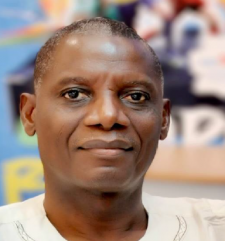 John Tokpabere Agberia is an artist, art historian, and curator. Graduating in 1983 from the University of Benin, Benin City, he began his academic career as a graduate assistant at the University of Uyo in 1985. He received an MA in art history at University of Ibadan in 1988 and a PhD from the University of Port Harcourt in 1998. Agberia has received several distinguished fellowships from the United Kingdom, including the AG Leventis fellowship at School of Oriental and African Studies (SOAS), University of London (1995), the Sainsbury Research fellowship of Sainsbury Research Unit at the University of East Anglia (1997), and the University of Oxford’s Titular fellowship at the Pitt Rivers Museum (2009). At Oxford Pitt Rivers, he worked with Jeremy Coote, the Joint Head of Collections where he began studying museums, cultural heritage, and curating. He has since become an active curator in Nigeria. Agberia is a professor of fine arts and design at the University of Port Harcourt, Nigeria.
John Tokpabere Agberia is an artist, art historian, and curator. Graduating in 1983 from the University of Benin, Benin City, he began his academic career as a graduate assistant at the University of Uyo in 1985. He received an MA in art history at University of Ibadan in 1988 and a PhD from the University of Port Harcourt in 1998. Agberia has received several distinguished fellowships from the United Kingdom, including the AG Leventis fellowship at School of Oriental and African Studies (SOAS), University of London (1995), the Sainsbury Research fellowship of Sainsbury Research Unit at the University of East Anglia (1997), and the University of Oxford’s Titular fellowship at the Pitt Rivers Museum (2009). At Oxford Pitt Rivers, he worked with Jeremy Coote, the Joint Head of Collections where he began studying museums, cultural heritage, and curating. He has since become an active curator in Nigeria. Agberia is a professor of fine arts and design at the University of Port Harcourt, Nigeria.
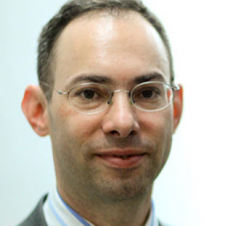 Felipe Soeiro Chaimovich was born in Santiago, Chile, and lives in São Paulo, Brazil. He earned a PhD in philosophy from the University of São Paulo and is a professor of art history, aesthetics, and art criticism at the Arts Faculty of Fundação Armando Álvares Penteado as well as the chief curator of the Museum of Modern Art, both located in São Paulo. He has three areas of academic research: mirrors as the origin of contemporary art, the confusion between gardens and nature in the ecological debate, and the aesthetics of taste and table manners. He has curated Sao Paolo’s International Garden Festival at Ibirapuera Park (2010) and Encounters of Art and Gastronomy at the city’s Museum of Modern Art (2012). Chaimovich is currently finishing a book on the origins of contemporary art that explores optics and the invention of perspective, Versailles, the relationship between mirrors and paintings, and the emergence of a new, self-reflexive working process in early 20th century art.
Felipe Soeiro Chaimovich was born in Santiago, Chile, and lives in São Paulo, Brazil. He earned a PhD in philosophy from the University of São Paulo and is a professor of art history, aesthetics, and art criticism at the Arts Faculty of Fundação Armando Álvares Penteado as well as the chief curator of the Museum of Modern Art, both located in São Paulo. He has three areas of academic research: mirrors as the origin of contemporary art, the confusion between gardens and nature in the ecological debate, and the aesthetics of taste and table manners. He has curated Sao Paolo’s International Garden Festival at Ibirapuera Park (2010) and Encounters of Art and Gastronomy at the city’s Museum of Modern Art (2012). Chaimovich is currently finishing a book on the origins of contemporary art that explores optics and the invention of perspective, Versailles, the relationship between mirrors and paintings, and the emergence of a new, self-reflexive working process in early 20th century art.
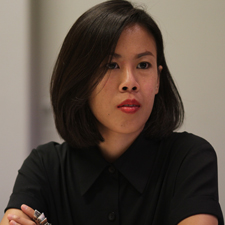 Thanavi Chotpradit is a lecturer in modern and contemporary Thai art history in the Department of Art History, Faculty of Archaeology, at Silpakorn University, Bangkok, Thailand. She is also a member of the editorial collective of Southeast of Now: Directions in Contemporary and Modern Art, a peer-reviewed journal dedicated to study of contemporary and modern art in Southeast Asia. She received her PhD in art history from Birkbeck, University of London, under a Royal Thai Government Scholarship. In 2015-16, Chotpradit participated in a cross-regional research program, “Ambitious Alignment: New Histories of Southeast Asian Art,” developed by the Power Institute Foundation for Art and Visual Culture, University of Sydney, Australia, and funded by the Getty Foundation’s Connecting Art Histories initiative. Her areas of interest include modern and Thai contemporary art in relation to memory studies, war commemoration, and Thai politics.
Thanavi Chotpradit is a lecturer in modern and contemporary Thai art history in the Department of Art History, Faculty of Archaeology, at Silpakorn University, Bangkok, Thailand. She is also a member of the editorial collective of Southeast of Now: Directions in Contemporary and Modern Art, a peer-reviewed journal dedicated to study of contemporary and modern art in Southeast Asia. She received her PhD in art history from Birkbeck, University of London, under a Royal Thai Government Scholarship. In 2015-16, Chotpradit participated in a cross-regional research program, “Ambitious Alignment: New Histories of Southeast Asian Art,” developed by the Power Institute Foundation for Art and Visual Culture, University of Sydney, Australia, and funded by the Getty Foundation’s Connecting Art Histories initiative. Her areas of interest include modern and Thai contemporary art in relation to memory studies, war commemoration, and Thai politics.
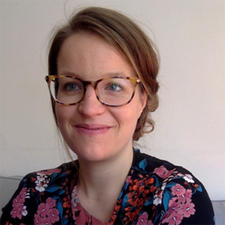 Katarzyna Cytlak is a Polish art historian based in Buenos Aires, Argentina, whose research focuses on the artistic creation of Central Europe in the second half of the twentieth century. As seen through a transmodern and transnational perspective, she studies conceptual art, radical and utopian architecture, socially engaged art, and art theory in relation to post-socialist countries. In 2012 she received a PhD from the University Paris 1 Panthéon-Sorbonne with a dissertation titled “The Grey Utopias: Architectural Projects in Central Europe in the 1970s.” Selected publications include articles in Umění/Art, Eadem Utraque Europa, Telón de Fondo, Third Text, and the RIHA Journal. Cytlak is currently a postdoctoral fellow at the Consejo Nacional de Investigaciones Científicas y Técnicas, Argentina (CONICET) and at the University of San Martín, Argentina. Her areas of research include East European and Latin American conceptual art, decolonial theory, and art history and criticism in post-communist countries.
Katarzyna Cytlak is a Polish art historian based in Buenos Aires, Argentina, whose research focuses on the artistic creation of Central Europe in the second half of the twentieth century. As seen through a transmodern and transnational perspective, she studies conceptual art, radical and utopian architecture, socially engaged art, and art theory in relation to post-socialist countries. In 2012 she received a PhD from the University Paris 1 Panthéon-Sorbonne with a dissertation titled “The Grey Utopias: Architectural Projects in Central Europe in the 1970s.” Selected publications include articles in Umění/Art, Eadem Utraque Europa, Telón de Fondo, Third Text, and the RIHA Journal. Cytlak is currently a postdoctoral fellow at the Consejo Nacional de Investigaciones Científicas y Técnicas, Argentina (CONICET) and at the University of San Martín, Argentina. Her areas of research include East European and Latin American conceptual art, decolonial theory, and art history and criticism in post-communist countries.
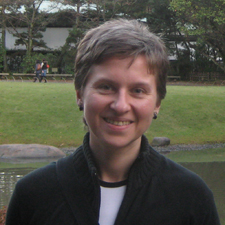 Anna Guseva is an associate professor in the School of History, Faculty of Humanities, National Research University Higher School of Economics (Moscow), where she has been a faculty member since 2014. She also directs a master’s program, “History of Art Culture and the Art Markets,” in the same department. Her research interests span both art and urban history in Russia and Asia in relation to food and rural history. Guseva graduated from the Lomonosov Moscow State University with a degree in art history in 1998 and received her PhD in architecture from the University of Tokyo in the Fujimori-Muramatsu Lab in 2011. She has organized architectural exhibitions as an independent curator, including My Melnikov (2013) and Environmentally Friendly Japanese Architecture: Taira Nishizawa Architects (2013), both at the Moscow Architectural Institute, and the latter also at the House of Architects in Nizniy Novgorod. Guseva also writes reviews for professional journals and trade publications on architecture and Asian art.
Anna Guseva is an associate professor in the School of History, Faculty of Humanities, National Research University Higher School of Economics (Moscow), where she has been a faculty member since 2014. She also directs a master’s program, “History of Art Culture and the Art Markets,” in the same department. Her research interests span both art and urban history in Russia and Asia in relation to food and rural history. Guseva graduated from the Lomonosov Moscow State University with a degree in art history in 1998 and received her PhD in architecture from the University of Tokyo in the Fujimori-Muramatsu Lab in 2011. She has organized architectural exhibitions as an independent curator, including My Melnikov (2013) and Environmentally Friendly Japanese Architecture: Taira Nishizawa Architects (2013), both at the Moscow Architectural Institute, and the latter also at the House of Architects in Nizniy Novgorod. Guseva also writes reviews for professional journals and trade publications on architecture and Asian art.
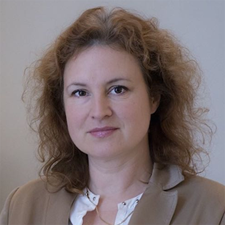 Markéta Hánová received a PhD in 2008 from Charles University in Prague, Czech Republic. Since 2000 she has been the curator of Japanese art at Prague’s National Gallery (NG). In 2012 she became the director of the Collection of Asian and African Art at the same institution. Hánová’s fields of interest include Japanese painting, ukiyo-e prints and Japonisme. She organized the exhibition Japonisme in Czech Art at the NG in 2014, one of many she has curated for the museum. In collaboration with the Japanese museums of art in Wakayama and Chiba she is currently developing an exhibition titled Japonisme in the Czech Lands to be presented in Japan in 2019. Her current research focuses on the popularity of collecting Japanese woodblock prints in the Czech lands in the late nineteen and early twentieth centuries. She has also reconceived the installation of Asian art at the NG Prague.
Markéta Hánová received a PhD in 2008 from Charles University in Prague, Czech Republic. Since 2000 she has been the curator of Japanese art at Prague’s National Gallery (NG). In 2012 she became the director of the Collection of Asian and African Art at the same institution. Hánová’s fields of interest include Japanese painting, ukiyo-e prints and Japonisme. She organized the exhibition Japonisme in Czech Art at the NG in 2014, one of many she has curated for the museum. In collaboration with the Japanese museums of art in Wakayama and Chiba she is currently developing an exhibition titled Japonisme in the Czech Lands to be presented in Japan in 2019. Her current research focuses on the popularity of collecting Japanese woodblock prints in the Czech lands in the late nineteen and early twentieth centuries. She has also reconceived the installation of Asian art at the NG Prague.
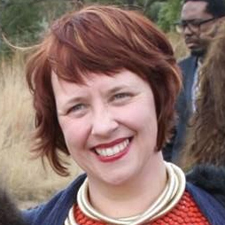 Alison Kearney is a Johannesburg-based artist and scholar of South African art, who lectures on art education in the School of Education at the University of the Witwatersrand (Wits). She obtained her PhD, titled “Beyond the Readymade: Found Objects in Contemporary South African art,” from Wits in 2016. She completed her master’s degree in fine art (with distinction) from the same university in 2004. Through her research Kearney interrogates the continuities and ruptures between African and Western art practices by critically exploring the ways in which Western avant-garde art practices and their attendant theories have informed contemporary African art. Kearney’s artworks have been featured in numerous exhibitions in South Africa, Switzerland and Australia. She has published scholarly work on contemporary South African art and develops education materials that facilitate particular engagements with art for the Wits Art Museum.
Alison Kearney is a Johannesburg-based artist and scholar of South African art, who lectures on art education in the School of Education at the University of the Witwatersrand (Wits). She obtained her PhD, titled “Beyond the Readymade: Found Objects in Contemporary South African art,” from Wits in 2016. She completed her master’s degree in fine art (with distinction) from the same university in 2004. Through her research Kearney interrogates the continuities and ruptures between African and Western art practices by critically exploring the ways in which Western avant-garde art practices and their attendant theories have informed contemporary African art. Kearney’s artworks have been featured in numerous exhibitions in South Africa, Switzerland and Australia. She has published scholarly work on contemporary South African art and develops education materials that facilitate particular engagements with art for the Wits Art Museum.
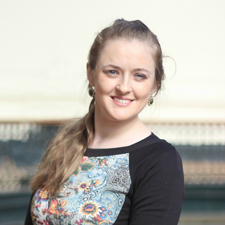 Natalia Keller is a graduate of Warsaw University (BA, 2010) and Utrecht University (MA, 2013), and a museum professional in a variety of cultural institutions in Europe and South America. Since 2014 she has been a researcher in the Collection Department of the National Museum of Fine Arts in Santiago de Chile where she studies its foreign works of art and their place within a Latin American context. Her research interests include prints and drawings, gender studies, and women artists. Keller has directed and participated in research and exhibition projects about female devotion in the Late Middle Ages, women’s involvement in the Academy during the 19th century, and contemporary Chilean women artists. She is especially interested in presenting art through the perspective of gender studies and visual and material culture, as well as through themes of community engagement and social justice.
Natalia Keller is a graduate of Warsaw University (BA, 2010) and Utrecht University (MA, 2013), and a museum professional in a variety of cultural institutions in Europe and South America. Since 2014 she has been a researcher in the Collection Department of the National Museum of Fine Arts in Santiago de Chile where she studies its foreign works of art and their place within a Latin American context. Her research interests include prints and drawings, gender studies, and women artists. Keller has directed and participated in research and exhibition projects about female devotion in the Late Middle Ages, women’s involvement in the Academy during the 19th century, and contemporary Chilean women artists. She is especially interested in presenting art through the perspective of gender studies and visual and material culture, as well as through themes of community engagement and social justice.
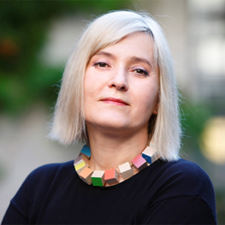 Sandra Križić Roban received a PhD from the Department of Art History, Faculty of Philosophy, at the University of Zagreb, Croatia. Active as a critic, curator, lecturer, and writer, Križić Roban is a senior research advisor at the Institute of Art History in Zagreb, where she also serves as editor-in-chief of the art journal Život umjetnosti. Together with colleagues she established the Office for Photography in 2013, a nonprofit association dedicated to researching and promoting contemporary photography. She is the author of the only two comprehensive studies of contemporary photography and painting in Croatia: At Second Glance: the Position of Contemporary Croatian Photography (2010), and Croatian Painting from 1945 to Today (2013). Within the project Postmedia and Non-institutional Art Practices from the 1960s she has organized three international conferences on contemporary arts. Križić Roban’s main research topics include contemporary art, history and theory of photography, post-war architecture, public space discourse, and contemporary war memorials.
Sandra Križić Roban received a PhD from the Department of Art History, Faculty of Philosophy, at the University of Zagreb, Croatia. Active as a critic, curator, lecturer, and writer, Križić Roban is a senior research advisor at the Institute of Art History in Zagreb, where she also serves as editor-in-chief of the art journal Život umjetnosti. Together with colleagues she established the Office for Photography in 2013, a nonprofit association dedicated to researching and promoting contemporary photography. She is the author of the only two comprehensive studies of contemporary photography and painting in Croatia: At Second Glance: the Position of Contemporary Croatian Photography (2010), and Croatian Painting from 1945 to Today (2013). Within the project Postmedia and Non-institutional Art Practices from the 1960s she has organized three international conferences on contemporary arts. Križić Roban’s main research topics include contemporary art, history and theory of photography, post-war architecture, public space discourse, and contemporary war memorials.
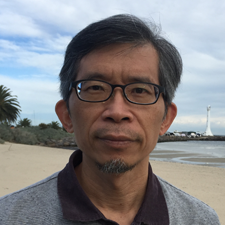
Hsin-tien Liao holds PhDs in art history (University of Central England in Birmingham, UK) and sociology (National Taiwan University, Taipei, Taiwan). He is the dean of the College of Humanities at the National Taiwan University of Arts and also teaches at the school’s Graduate School of Art Management and Culture Policy. From 2010-13 he was a senior lecturer at Australian National University where he is now an honorary professor. Liao’s research focuses on calligraphy, Taiwanese art, the sociology of art, and postcolonial visual art. Recent publications include The Tension of Art: Taiwanese Fine Art and the Politics of Culture (2010), Extending Knowledge through Investigating Art (2013), and A New Thinking on Taiwanese Art: Framework, Criticism, and Aesthetics (2017). He has written biographies about two modern Taiwanese printmakers: Liao Shiou-ping (2016) and Li Xi-chi (2017). In 2013 he published a Chinese translation of Kenneth Clark’s Landscape into Art. In 2016, he established the Taiwanese Art History Association and became its first chair.
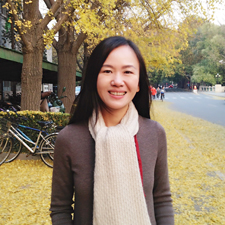 Chen Liu teaches art history and architecture at Tsinghua University in Beijing, China, where she received a bachelor’s degree in architecture with honors. After receiving a master’s in architecture and urban planning from the University of Maryland in 2000, she practiced as an architect in Washington DC until 2005. In 2011, she received a PhD in art history from Princeton University, specializing in Renaissance and Baroque art and architecture. In 2012, funded by an Andrew W. Mellow Fellowship, she helped create and direct the first Villa I Tatti summer research seminar designed specifically for Chinese scholars. “The Unity of the Arts in Renaissance Italy” provided participants with the opportunity to study firsthand the art and architecture of Renaissance Italy. Liu also teaches courses on the visual arts at Beijing Film Academy and Tongji University (Shanghai). She publishes widely on early modern art and architecture, as well as on the response of Chinese scholars to the Italian Renaissance.
Chen Liu teaches art history and architecture at Tsinghua University in Beijing, China, where she received a bachelor’s degree in architecture with honors. After receiving a master’s in architecture and urban planning from the University of Maryland in 2000, she practiced as an architect in Washington DC until 2005. In 2011, she received a PhD in art history from Princeton University, specializing in Renaissance and Baroque art and architecture. In 2012, funded by an Andrew W. Mellow Fellowship, she helped create and direct the first Villa I Tatti summer research seminar designed specifically for Chinese scholars. “The Unity of the Arts in Renaissance Italy” provided participants with the opportunity to study firsthand the art and architecture of Renaissance Italy. Liu also teaches courses on the visual arts at Beijing Film Academy and Tongji University (Shanghai). She publishes widely on early modern art and architecture, as well as on the response of Chinese scholars to the Italian Renaissance.
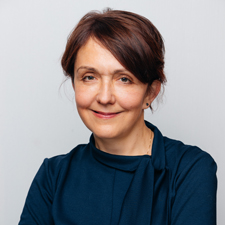 Natalia Moussienko is a leading research fellow at the Modern Art Research Institute of the National Academy of Arts of Ukraine (Kyiv). She is the author of numerous books and articles on art history, cultural diplomacy, cinema, and urbanism, including Art of Maidan (2016), Kyiv Art Space (2013), and Arts and Politics (2002). In 2016 the National Academy of Arts of Ukraine awarded Moussienko a Golden Medal for her achievements in cultural diplomacy. She was also awarded a Fulbright scholarship to conduct research at the Kennan Institute, Wilson Center, in Washington DC (2011-2012) and a Thesaurus Polonia fellowship to study at the International Cultural Center in Krakow (2017). Moussienko is an initiator and curator of the Art of Maidan, a continuing project begun in 2014 to document the explosion of artistic creativity during the Revolution of Dignity in 2013-14. Central to the project is a book and exhibition that has already been presented in sixteen locations in Ukraine, the United States, and Europe.
Natalia Moussienko is a leading research fellow at the Modern Art Research Institute of the National Academy of Arts of Ukraine (Kyiv). She is the author of numerous books and articles on art history, cultural diplomacy, cinema, and urbanism, including Art of Maidan (2016), Kyiv Art Space (2013), and Arts and Politics (2002). In 2016 the National Academy of Arts of Ukraine awarded Moussienko a Golden Medal for her achievements in cultural diplomacy. She was also awarded a Fulbright scholarship to conduct research at the Kennan Institute, Wilson Center, in Washington DC (2011-2012) and a Thesaurus Polonia fellowship to study at the International Cultural Center in Krakow (2017). Moussienko is an initiator and curator of the Art of Maidan, a continuing project begun in 2014 to document the explosion of artistic creativity during the Revolution of Dignity in 2013-14. Central to the project is a book and exhibition that has already been presented in sixteen locations in Ukraine, the United States, and Europe.
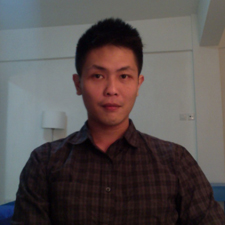 Simon Soon is a researcher and senior lecturer in the Visual Art Department of the Cultural Centre, University of Malaya, located in Kuala Lumpur, Malaysia. He completed a PhD in art history at the University of Sydney with a dissertation titled, “What is Left of Art? The Spatio-Visual Practice of Political Art in Indonesia, Singapore, Thailand, and the Philippines, 1950s–1970s.” Soon studies comparative modernities in art, urban histories, and art historiography and writes on various topics related to twentieth-century art across Asia. He is also a co-editor of Narratives of Malaysian Art, Vol. 4. He is the Penang field director for the Power Institute, University of Sydney’s “Site and Space of Southeast Asia,” funded by Getty Foundation’s Connecting Art Histories Initiative. He is also an editorial member of Southeast of Now: Directions in Contemporary and Modern Art, a peer-review journal published by NUS Press (National University of Singapore) and a team member of Malaysia Design Archive.
Simon Soon is a researcher and senior lecturer in the Visual Art Department of the Cultural Centre, University of Malaya, located in Kuala Lumpur, Malaysia. He completed a PhD in art history at the University of Sydney with a dissertation titled, “What is Left of Art? The Spatio-Visual Practice of Political Art in Indonesia, Singapore, Thailand, and the Philippines, 1950s–1970s.” Soon studies comparative modernities in art, urban histories, and art historiography and writes on various topics related to twentieth-century art across Asia. He is also a co-editor of Narratives of Malaysian Art, Vol. 4. He is the Penang field director for the Power Institute, University of Sydney’s “Site and Space of Southeast Asia,” funded by Getty Foundation’s Connecting Art Histories Initiative. He is also an editorial member of Southeast of Now: Directions in Contemporary and Modern Art, a peer-review journal published by NUS Press (National University of Singapore) and a team member of Malaysia Design Archive.
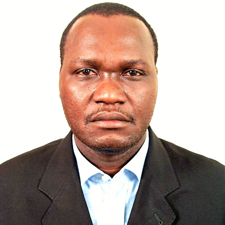 Romuald Tchibozo is an art historian from Benin. He received his PhD in 2003 from the Humboldt University of Berlin with a dissertation titled “Art and Arbitrary: a Study of the African Contemporary Art Reception in the West: the German Case from 1950 to the Present Day.” Currently, he is a senior lecturer of art history in the Archaeology and History Department, Faculty of Arts and Humanities, National Institute of Art, Archaeology and Cultural Craft, at the University of Abomey-Calavi, Benin. He also teaches art history at the Centre Régional d’Action Culturelle of Lomé in Togo. In 2013-14, Tchibozo was a fellow in the Art Histories and Aesthetic Practices program, an initiative of the Max-Planck-Institute at the Forum for Transregional Studies in Berlin. His research focuses on African contemporary art in the former German Democratic Republic, the evolution of contemporary art in Benin, and heritage issues, such as the Yoruba Gèlèdè Society and the practice of art history.
Romuald Tchibozo is an art historian from Benin. He received his PhD in 2003 from the Humboldt University of Berlin with a dissertation titled “Art and Arbitrary: a Study of the African Contemporary Art Reception in the West: the German Case from 1950 to the Present Day.” Currently, he is a senior lecturer of art history in the Archaeology and History Department, Faculty of Arts and Humanities, National Institute of Art, Archaeology and Cultural Craft, at the University of Abomey-Calavi, Benin. He also teaches art history at the Centre Régional d’Action Culturelle of Lomé in Togo. In 2013-14, Tchibozo was a fellow in the Art Histories and Aesthetic Practices program, an initiative of the Max-Planck-Institute at the Forum for Transregional Studies in Berlin. His research focuses on African contemporary art in the former German Democratic Republic, the evolution of contemporary art in Benin, and heritage issues, such as the Yoruba Gèlèdè Society and the practice of art history.
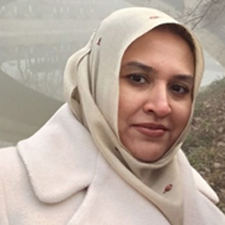 Sarah Umer is an assistant professor in the Institute of Visual Arts & Design at Lahore College for Women, the largest women’s university in Pakistan and one of the largest in South Asia. In addition to teaching undergraduate and graduate students, Umer organizes seminars and conferences with universities and museums on a national and international level. Her research interests include the study of ancient civilizations and religions, predominantly in the South Asian region. In 2016, Umer received a PhD from Lahore College for Women with a dissertation on the religious beliefs of the Indus Valley people. In early 2017, as a recipient of a Charles Wallace Fellowship, she probed this topic further at SOAS (School of Oriental and African Studies), University of London. In particular, she studied the cuneiform tablets of Mesopotamia to see if this civilization may have shared religious beliefs with the Indus Valley culture, in addition to their known trading connections.
Sarah Umer is an assistant professor in the Institute of Visual Arts & Design at Lahore College for Women, the largest women’s university in Pakistan and one of the largest in South Asia. In addition to teaching undergraduate and graduate students, Umer organizes seminars and conferences with universities and museums on a national and international level. Her research interests include the study of ancient civilizations and religions, predominantly in the South Asian region. In 2016, Umer received a PhD from Lahore College for Women with a dissertation on the religious beliefs of the Indus Valley people. In early 2017, as a recipient of a Charles Wallace Fellowship, she probed this topic further at SOAS (School of Oriental and African Studies), University of London. In particular, she studied the cuneiform tablets of Mesopotamia to see if this civilization may have shared religious beliefs with the Indus Valley culture, in addition to their known trading connections.
Participating Alumni
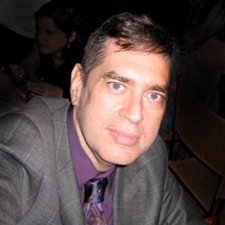 Cezar Bartholomeu is an artist and professor of art history at the School of Fine Arts, Universidade Federal do Rio de Janeiro (UFRJ), in Brazil. He received a PhD in visual languages from both the UFRJ and the École de Hautes Études in Paris. Between 2010-17 he was the editor-in-chief of Arte & Ensaios, one of Brazil’s major art journals. His areas of research include photography as art, photography’s history and theory, and photography in Brazil. As an artist, Bartholomeu exhibits widely in Brazil and Europe. His publications include Celebrações/Negociações – Fotografia Africana na coleção Gilberto Chateaubriand (African Photography in the Gilberto Chateaubriand Collection, Museum of Modern Art, Rio de Janeiro, 2011), “Emanation/Abjection” in Laboratório Público de Históra da Arte Mundial (Public World Art History Lab, Rio de Janeiro: UERJ, 2014), and “Thirty Times Failed: Valério Vieira and Experimental Photography in Brazil” in Photography and Failure (New York: Bloomsbury, 2017).
Cezar Bartholomeu is an artist and professor of art history at the School of Fine Arts, Universidade Federal do Rio de Janeiro (UFRJ), in Brazil. He received a PhD in visual languages from both the UFRJ and the École de Hautes Études in Paris. Between 2010-17 he was the editor-in-chief of Arte & Ensaios, one of Brazil’s major art journals. His areas of research include photography as art, photography’s history and theory, and photography in Brazil. As an artist, Bartholomeu exhibits widely in Brazil and Europe. His publications include Celebrações/Negociações – Fotografia Africana na coleção Gilberto Chateaubriand (African Photography in the Gilberto Chateaubriand Collection, Museum of Modern Art, Rio de Janeiro, 2011), “Emanation/Abjection” in Laboratório Público de Históra da Arte Mundial (Public World Art History Lab, Rio de Janeiro: UERJ, 2014), and “Thirty Times Failed: Valério Vieira and Experimental Photography in Brazil” in Photography and Failure (New York: Bloomsbury, 2017).
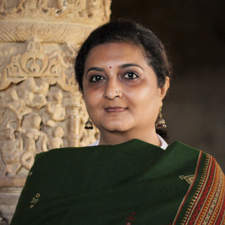 Parul Pandya Dhar is an associate professor of South and Southeast Asian art history in the Department of History, University of Delhi, where she researches and teaches premodern Indian art history and connected histories of Asian art. She has authored The Toraṇa in Indian and Southeast Asian Architecture (2010), edited Indian Art History: Changing Perspectives (2011), and co-edited Temple Architecture and Imagery of South and Southeast Asia (2016), Asian Encounters: Exploring Connected Histories (2014), and Cultural Interface of India with Asia: Religion, Art and Architecture (2004). Dhar has served as a jury member, peer reviewer, and editorial board member for numerous international conferences, publications, and journals. She was awarded the Nehru Trust Travel Grant, UK, in 2004, the Alexander von Humboldt Post-Doctoral Research Fellowship, Berlin, in 2007-08, and the CAA-Getty International Program award in 2012. She is a participating alumna of the CAA-Getty program in 2018. Dhar is also a well-known Bharatanatyam artist.
Parul Pandya Dhar is an associate professor of South and Southeast Asian art history in the Department of History, University of Delhi, where she researches and teaches premodern Indian art history and connected histories of Asian art. She has authored The Toraṇa in Indian and Southeast Asian Architecture (2010), edited Indian Art History: Changing Perspectives (2011), and co-edited Temple Architecture and Imagery of South and Southeast Asia (2016), Asian Encounters: Exploring Connected Histories (2014), and Cultural Interface of India with Asia: Religion, Art and Architecture (2004). Dhar has served as a jury member, peer reviewer, and editorial board member for numerous international conferences, publications, and journals. She was awarded the Nehru Trust Travel Grant, UK, in 2004, the Alexander von Humboldt Post-Doctoral Research Fellowship, Berlin, in 2007-08, and the CAA-Getty International Program award in 2012. She is a participating alumna of the CAA-Getty program in 2018. Dhar is also a well-known Bharatanatyam artist.
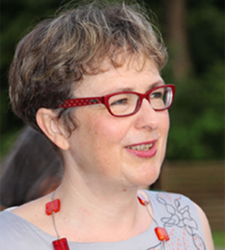 Ildikó Gericsné Fehér received an MA and PhD in art history from Eötvös Loránd University in Budapest, Hungary. As associate professor in the Department of Art History of the Hungarian University of Fine Arts in Budapest, she lectures and leads seminars on Renaissance and Baroque art. She is also a consultant to the university’s Conservation Department. Fehér’s research interests include detached wall paintings from medieval and Renaissance Italy in the collection of the Museum of Fine Arts Budapest; Florentine art dealers at the end of the nineteenth century; Károly Pulszky’s purchases of paintings in Italy for the museum circa 1890; wall paintings in Umbria from the fourteenth to sixteenth century; self-portraits by Hungarian artists in the Uffizi Gallery; and the works of Jacopo Palma il Giovane.
Ildikó Gericsné Fehér received an MA and PhD in art history from Eötvös Loránd University in Budapest, Hungary. As associate professor in the Department of Art History of the Hungarian University of Fine Arts in Budapest, she lectures and leads seminars on Renaissance and Baroque art. She is also a consultant to the university’s Conservation Department. Fehér’s research interests include detached wall paintings from medieval and Renaissance Italy in the collection of the Museum of Fine Arts Budapest; Florentine art dealers at the end of the nineteenth century; Károly Pulszky’s purchases of paintings in Italy for the museum circa 1890; wall paintings in Umbria from the fourteenth to sixteenth century; self-portraits by Hungarian artists in the Uffizi Gallery; and the works of Jacopo Palma il Giovane.
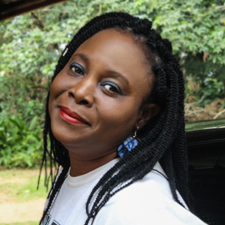 Peju Layiwola is an artist and professor of art history, Department of Creative Arts, University of Lagos, Nigeria. Through her writing and multimedia works Layiwola has addressed the tragic impact of the British Expedition to Benin, Nigeria, in 1897. Her focus on memory, Benin art and culture, and female participation in the visual arts in Nigeria has led to several articles in edited volumes such as Benin Kings and Rituals: Court Arts from Nigeria (2007), Writing African Women: Gender, Popular Culture and Literature in West Africa (1997) and N.Paradoxa, an international feminist journal (2013). Layiwola’s art has featured in several exhibitions within and outside Nigeria, including Benin1897.com: Art and the Restitution Question (Main Auditorium Gallery, University of Lagos, 2010), Whose Centenary? (Igun Street, Benin City, 2014) and a traveling exhibition Boundary Object organized by Artefakte, Berlin (Dresden, Madrid, 2015-16). She is currently head of the Department of Creative Arts, University of Lagos, Nigeria.
Peju Layiwola is an artist and professor of art history, Department of Creative Arts, University of Lagos, Nigeria. Through her writing and multimedia works Layiwola has addressed the tragic impact of the British Expedition to Benin, Nigeria, in 1897. Her focus on memory, Benin art and culture, and female participation in the visual arts in Nigeria has led to several articles in edited volumes such as Benin Kings and Rituals: Court Arts from Nigeria (2007), Writing African Women: Gender, Popular Culture and Literature in West Africa (1997) and N.Paradoxa, an international feminist journal (2013). Layiwola’s art has featured in several exhibitions within and outside Nigeria, including Benin1897.com: Art and the Restitution Question (Main Auditorium Gallery, University of Lagos, 2010), Whose Centenary? (Igun Street, Benin City, 2014) and a traveling exhibition Boundary Object organized by Artefakte, Berlin (Dresden, Madrid, 2015-16). She is currently head of the Department of Creative Arts, University of Lagos, Nigeria.
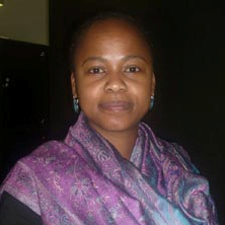 Nomusa Makhubu holds a PhD in art history and visual culture from Rhodes University, South Africa. A senior lecturer of art history at the University of Cape Town’s Michaelis School of Fine Art, Makhubu studies art interventionism, popular culture, and social engagement in African visual art. She is the recipient of the ABSA L’Atelier Gerard Sekoto Award (2006), the Prix du Studio National des Arts Contemporain, Le Fresnoy (2014) and the First Runner Up in the Department of Science and Technology (DST) Women in Science Awards (2017). Makhubu is a member of the South African Young Academy of Science and Chair of the Africa South Art Initiative. In 2016, she was a fellow of the American Council of Learned Societies and an African Studies Association (ASA) Presidential Fellow. Makhubu is currently an Institute for Creative Arts fellow (University of Cape Town) and a Mandela-Mellon Fellow at the Hutchins Center for African and African American Studies, Harvard University.
Nomusa Makhubu holds a PhD in art history and visual culture from Rhodes University, South Africa. A senior lecturer of art history at the University of Cape Town’s Michaelis School of Fine Art, Makhubu studies art interventionism, popular culture, and social engagement in African visual art. She is the recipient of the ABSA L’Atelier Gerard Sekoto Award (2006), the Prix du Studio National des Arts Contemporain, Le Fresnoy (2014) and the First Runner Up in the Department of Science and Technology (DST) Women in Science Awards (2017). Makhubu is a member of the South African Young Academy of Science and Chair of the Africa South Art Initiative. In 2016, she was a fellow of the American Council of Learned Societies and an African Studies Association (ASA) Presidential Fellow. Makhubu is currently an Institute for Creative Arts fellow (University of Cape Town) and a Mandela-Mellon Fellow at the Hutchins Center for African and African American Studies, Harvard University.
For more information about the CAA-Getty International Program, please contact project director Janet Landay at jlanday@collegeart.org or 212-392-4420.
2018 CAA-Getty International Program Participants Selected
posted by CAA — October 10, 2017
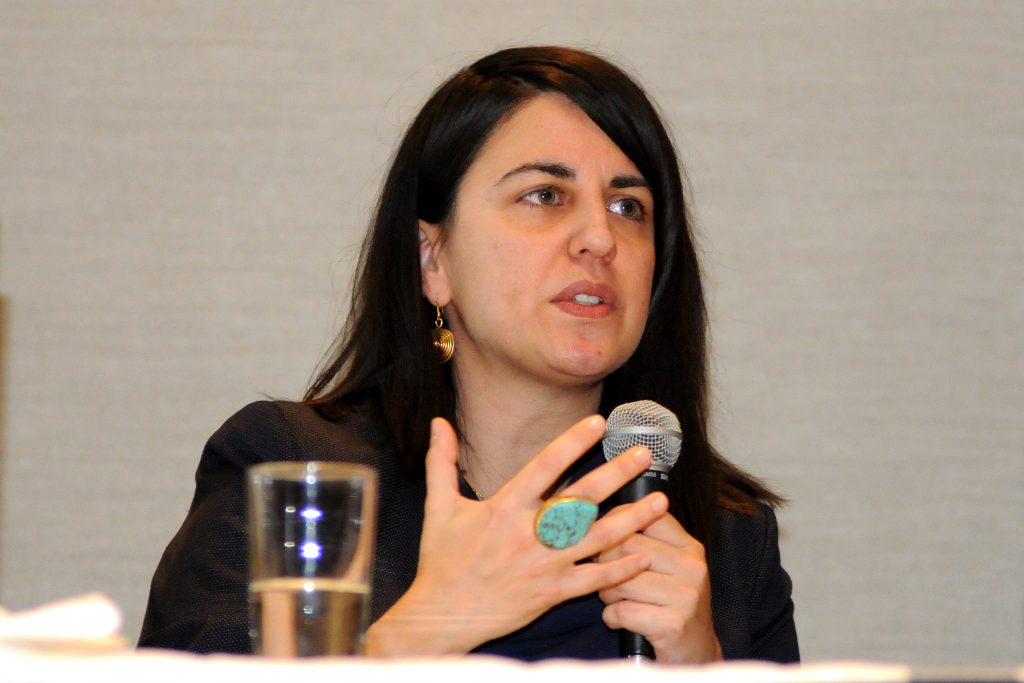 CAA is pleased to announce this year’s participants in the CAA-Getty International Program. Now in its seventh year, the international program will bring fifteen new participants and five alumni to the 2018 Annual Conference in Los Angeles, February 21-24. The participants—professors of art history, curators, and artists who teach art history—hail from countries throughout the world, expanding CAA’s growing international membership and contributing to an increasingly diverse community of scholars and ideas. Selected by a jury of CAA members from a highly competitive group of applicants, the grant recipients will receive funding for travel expenses, hotel accommodations, conference registration, CAA membership, and per diems for out-of-pocket expenditures.
CAA is pleased to announce this year’s participants in the CAA-Getty International Program. Now in its seventh year, the international program will bring fifteen new participants and five alumni to the 2018 Annual Conference in Los Angeles, February 21-24. The participants—professors of art history, curators, and artists who teach art history—hail from countries throughout the world, expanding CAA’s growing international membership and contributing to an increasingly diverse community of scholars and ideas. Selected by a jury of CAA members from a highly competitive group of applicants, the grant recipients will receive funding for travel expenses, hotel accommodations, conference registration, CAA membership, and per diems for out-of-pocket expenditures.
At a one-day preconference colloquium, to be held this year at the Getty Center, the fifteen new participants will discuss key issues in the international study of art history together with five CAA-Getty alumni and several CAA members from the United States, who also serve as hosts throughout the conference. The preconference program will delve deeper into subjects discussed during the past year’s CAA-Getty reunion, held at the 2017 Annual Conference, in which twenty alumni presented a series of conference sessions titled “Global Conversations.” Topics include such issues as postcolonial and Eurocentric legacies, interdisciplinary and transnational methodologies, and global trends in museum research and exhibitions.
The inclusion of five alumni is an added feature of this year’s CAA-Getty program. They will provide intellectual links between previous convenings of the international group and this year’s program and also serve as ombudsmen between CAA and the growing community of CAA-Getty alumni. In addition to contributing to the preconference colloquium, the five participating alumni will present a new Global Conversation during the 2018 conference titled Border Crossings: The Migration of Art, People, and Ideas.
The goal of the CAA-Getty International Program is to increase international participation in the organization’s activities, thereby expanding international networks and the exchange of ideas both during and after the conference. CAA currently includes members from 70 countries around the world. The CAA-Getty International Program is made possible with a generous grant from The Getty Foundation.
2018 Participants in the CAA-Getty International Program
John Agberia, Professor, Department of Fine Arts & Design, University of Port Harcourt, Nigeria
Felipe Chaimovich, Chief Curator and Professor, Museo de Arte Moderna de São Paulo Fundação Armando Álvares Penteado, Brazil
Chen Liu, Associate Professor, Tsinghua University, Beijing, China
Thanavi Chotpradit, Lecturer, Silpakorn University, Bangkok, Thailand
Katarzyna Cytlak, postdoctoral researcher, Universidad Nacional de San Martín, Buenos Aires, Argentina
Anna Guseva, Associate Professor, Higher School of Economics, Moscow, Russia
Marketa Hanova, Director of the Collection of Asian Art, The National Gallery in Prague, Czech Republic
Alison Kearney, Lecturer, University of the Witwatersrand (Wits), Johannesburg, South Africa
Natalia Keller, Researcher of the Collection Department, Museo Nacional de Bellas Artes, Santiago, Chile
Hsin-tien Liao, Dean of College of Humanities, National Taiwan University of Arts, New Taipei City, Taiwan
Natalia Moussienko, Leading Research Fellow, Modern Art Research Institute, National Academy of Arts, Kiev, Ukraine
Sandra Krizic Roban, Senior Research Advisor, Institute of Art History, Zagreb, Croatia
Simon Soon, Senior Lecturer, University of Malaya /Malaysia Design Archive, Kuala Lumpur, Malaysia
Romuald Tchibozo, Senior Lecturer, University of Abomey-Calavi, Benin
Sarah Umer, PhD Coordinator/ Assistant Professor, Lahore College for Women University, Pakistan
Participating Alumni
Cezar Bartholomeu, Assistant Professor, School of Fine Arts, Universidade Federal do Rio de Janeiro, Brazil
Parul Pandya Dhar, Associate Professor, Department of History, University of Delhi, India
Ildikó Fehér, Associate Professor, Hungarian Academy of Fine Arts, Budapest, Hungary
Peju Layiwola, Professor of Art History, Department of Creative Arts University of Lagos, Nigeria
Nomusa Makhubu, Senior Lecturer, Michaelis School of Fine Art, University of Cape Town, South Africa
A Seminar Introduces a New Design Program in Bangkok
posted by CAA — September 26, 2017
Since 2015, CAA’s International Committee has put out a call for papers on international topics in the visual arts to be published by CAA. Brian Curtain, an art historian and curator based in Bangkok, submitted the following article to Pearlie Rose S. Baluyut, a member of the International Committee. www.briancurtinbangkok.com
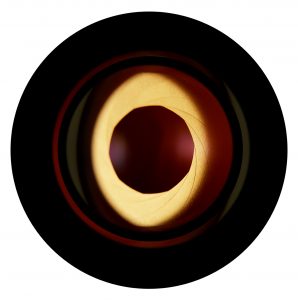
Piyatat Hemmatat, from the series 3rd Eye Trilogy: The New Dawn, 2013, C-print, artist proof, dimensions variable (artwork © Piyatat Hemmatat; photograph provided by the artist)
The Department of Communication Design (CommDe) of the Faculty of Architecture, Chulalongkorn University, Bangkok, will inaugurate a new MA program (CommMa) in 2018, to be led by Dr. Juthamas Tangsantikul, the current Deputy Director of CommDe. CommMa will be a practice-based research program with a focus on Southeast Asia. An introductory seminar and hands-on workshop, The Ghost in the Machine, was held on July 13, 2017, to present the program’s core methods and interests: the study of regional visual and material cultures as a means to explore questions of indigeneity and the critical potential of comparisons with other contexts. The seminar title evokes the relationship of animism and modernity—indeed, a colonial distinction. Participants conjured the local legacies of this relationship and also considered the metanarratives of politics, representation, and the fictive.
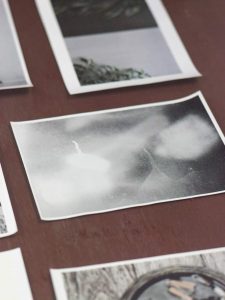
Participants’ works from Ghost in the Machine workshop (photograph by M. A. Trusler)
The featured speakers at the seminar, Dr. Clare Veal, MA Asian Art Histories lecturer at LaSalle College of the Arts in Singapore, and Thai photographer Piyatat Hemmatat share an interest in Walter Benjamin’s understanding of photography as an “optical unconscious,” which can capture and shape what can be thought but is normally beyond perception. Veal’s research on photographic histories and Hemmatat’s ethereal visions quite literally slow down our consumption of photography, the former by tracing varieties of meaning in what can be framed and the latter by providing expanses of detail.
Veal’s lecture moved beyond the paradigmatic examples of the infamous “Cottingley Fairies” photographs—early twentieth-century works displaying images of fairies that Sir Arthur Conan Doyle contended proved the existence of the supernatural—to an account of how desires and ideologies haunt colonial-era photography, including both landscape and figural representations. The context of Siam/Thailand allows for particular consideration of the performative aspects of photography. Photography was introduced in Siam by King Mongkut Rama IV (1851–1868), who thereby broke a longstanding taboo on visual representation of royalty outside idealized and conventionalized mural types. Veal deftly noted an exchange between the indexical and iconic with this introduction: in a word, a representation of something comes to stand for something. Here, the locating of a “Thai” tradition of cultural beliefs proves less compelling than the noting of shifting regulations of representation, ones that have become exceptionally aggressive in the recent years of military rule.
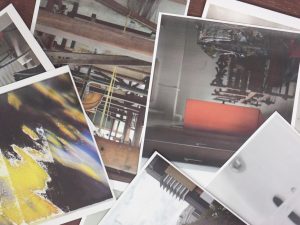
Participants’ works from Ghost in the Machine workshop (photograph by M. A. Trusler)
Participants’ works from Ghost in the Machine workshop (photograph by M. A. Trusler)
Hemmatat’s alchemical understanding of photography was complementary to Veal’s insights. His practice explores the deceptively illusionistic image in abstraction and representation as well as the suggestion that systems are at work within nature. While allowing for the captivating, seductive qualities of photography, his images are rooted in both the artist’s eye and experimental photographic techniques. The diversity of Hemmatat’s oeuvre suggests a restless inquisitiveness. He is currently making sculptures inspired by Hindu and Christian icons, dovetailing three-dimensional works with his longstanding engagement with photographs-as-objects.
Hemmatat presented objects for a mysterious cabinet of curiosities without telling the participants what they were: such things as volcanic Mayan glass, a camera lucida, and washi paper, a Japanese paper purported to last thousands of years. Inspired by the seemingly esoteric implications of these objects and Veal’s sharp critical guidance, participants then set out to take photographs in the immediate vicinity of the seminar. Images of graffiti, air vents, and architectural details were shaped with enigmatic auras, and subsequent group discussion debated the vagaries of perception and the relationship between the recognizable and the illegible as well as the concrete and the abstract.
Fair Use Events in France: A Recap
posted by michaelh — July 11, 2017
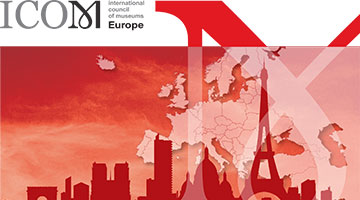 On June 4 and 6, CAA, represented by Hunter O’Hanian, participated in three events in France about CAA’s Code of Best Practices in Fair Use for the Visual Arts. The first took place on June 4 in Fontainebleau, when O’Hanian spoke at a session on “Fair Use and Open Content,” at the seventh annual Festival of Art History, held during the annual Fontainebleau Festival. Organized by Martine Denoyelle of France’s Institut National d’Histoire de l’Art (INHA), other speakers included Hana Leaper from the Paul Mellon Center for Studies in British Art (UK) and Mikka Gee Conway from the J. Paul Getty Trust. Approximately seventy-five people attended the session, which concluded with a lively discussion about copyright issues in France, the UK, and USA. To share the content of the Code of Best Practices as widely as possible, CAA produced a version in French translation that was available throughout the three day festival.
On June 4 and 6, CAA, represented by Hunter O’Hanian, participated in three events in France about CAA’s Code of Best Practices in Fair Use for the Visual Arts. The first took place on June 4 in Fontainebleau, when O’Hanian spoke at a session on “Fair Use and Open Content,” at the seventh annual Festival of Art History, held during the annual Fontainebleau Festival. Organized by Martine Denoyelle of France’s Institut National d’Histoire de l’Art (INHA), other speakers included Hana Leaper from the Paul Mellon Center for Studies in British Art (UK) and Mikka Gee Conway from the J. Paul Getty Trust. Approximately seventy-five people attended the session, which concluded with a lively discussion about copyright issues in France, the UK, and USA. To share the content of the Code of Best Practices as widely as possible, CAA produced a version in French translation that was available throughout the three day festival.
Read the Code of Best Practices in French
On June 6, O’Hanian was part of a panel about fair use during the annual conference of ICOM Europe, held at the Musée des Arts et Metiers in Paris. Titled “Copyright Flexibilities in the US and EU: How Fair Use and Other Flexibilities are Helping Museums to Fulfill their Mission,” the session also included Peter Jaszi, professor of law at the Washington College of Law, American University, and a principal lead investigator for CAA’s fair use initiative. The event was introduced Luis Raposo, president of ICOM-Europe, and included Ronan Deazley, Queens University, Belfast, Northern Ireland; Paul Klimpel, iRights Lab Culture, and ICOM Germany member; Claire La Henaff, Musée National Picasso (Paris), and ICOM France member; and Charlotte Waelde, Centre for Dance Research, Coventry University. Approximately one hundred museum professionals from countries throughout Europe attended the event.
Earlier the same day, CAA convened a small planning meeting to explore next steps in sharing the Code of Best Practices with decision makers in the EU interested in increasing copyright flexibilities. The Terra Foundation generously made their Paris offices available for the meeting, which included, in addition to O’Hanian and Jaszi, Francesca Rose from the Terra Foundation; Anne Goodyear, codirector of the Bowdoin College Museum of Art and chair of CAA’s Committee on Intellectual Property; Martine Denoyelle, Chief Curator of Heritage, Institut National d’Histoire de l’Art; Ronan Deazley, School of Law, Queens University, Belfast, N. Ireland; and Stef van Gompel, Faculty of Law, University of Amsterdam. The discussion focused on ways in which European countries were increasing access to information and images, including open access and fair dealing (in the UK), and the usefulness of gathering data about current EU practices in the use of copyrighted materials. The group plans to reconvene during the CAA annual conference in Los Angeles in 2018.
CAA’s participation in these events was underwritten by a generous grant from the Samuel H. Kress Foundation.
Getty Supports the CAA-Getty International Program for a Seventh Year
posted by CAA — June 05, 2017
 The Getty Foundation has awarded the College Art Association (CAA) a grant to fund the CAA-Getty International Program for a seventh consecutive year. The Foundation’s support will enable CAA to bring twenty international visual-arts professionals to the 106th Annual Conference, taking place February 21-24, 2018 in Los Angeles, CA. Fifteen individuals will be first-time participants in the program and five will be alumni, returning to present papers during the conference. The CAA-Getty International Program provides funds for travel expenses, hotel accommodations, per diems, conference registrations, and one-year CAA memberships to art historians, artists who teach art history, and museum curators. The program will include a one-day preconference colloquium on international issues in art history on February 20, this year to be held at the Getty Center.
The Getty Foundation has awarded the College Art Association (CAA) a grant to fund the CAA-Getty International Program for a seventh consecutive year. The Foundation’s support will enable CAA to bring twenty international visual-arts professionals to the 106th Annual Conference, taking place February 21-24, 2018 in Los Angeles, CA. Fifteen individuals will be first-time participants in the program and five will be alumni, returning to present papers during the conference. The CAA-Getty International Program provides funds for travel expenses, hotel accommodations, per diems, conference registrations, and one-year CAA memberships to art historians, artists who teach art history, and museum curators. The program will include a one-day preconference colloquium on international issues in art history on February 20, this year to be held at the Getty Center.
The deadline for applications is August 21, 2017. Guidelines and application.
The CAA-Getty International Program was established to increase international participation in CAA and the CAA Annual Conference. The program fosters collaborations between North American art historians, artists, and curators and their international colleagues and introduces visual arts professionals to the unique environments and contexts of practices in different countries.
Since the CAA-Getty International Program’s inception in 2012, ninety scholars have participated in CAA’s Annual Conference. Historically, the majority of international registrants at the conference have come from North America, the United Kingdom, and Western European countries. The CAA-Getty International Program has greatly diversified attendance, adding scholars from Central and Eastern Europe, Russia, Africa, Asia, Southeast Asia, Caribbean countries, and South America. The majority of the participants teach art history (or visual studies, art theory, or architectural history) at the university level; others are museum curators or researchers.
Earlier this year, CAA organized a reunion to celebrate five successful years of the CAA-Getty International Program. Twenty alumni were selected to present papers at the Annual Conference in New York, held February 15-18, 2017. Organized into four sessions about international topics in art history, these Global Conversations were chaired by distinguished scholars from the United States and featured presentations by the CAA-Getty alumni.
Read Global Conversations: 20 Papers from the 2017 CAA-Getty Alumni
One measure of the program’s success is the remarkable number of international collaborations that have ensued, including an ongoing study of similarities and differences in the history of art among Eastern European countries and South Africa, attendance at other international conferences, publications in international journals, and participation in panels and sessions at subsequent CAA Annual Conferences. Former grant recipients have become ambassadors of CAA in their countries, sharing knowledge gained at the Annual Conference with their colleagues at home. The value of attending a CAA Annual Conference as a participant in the CAA-Getty International Program was succinctly summarized by alumnus Nazar Kozak, Senior Researcher, Department of Art Studies, National Academy of Sciences of Ukraine “To put it simply, I understood that I can become part of a global scholarly community. I felt like I belong here.”
About CAA
The College Art Association is the world’s largest professional association for artists, art historians, designers, arts professionals, and arts organizations. CAA serves as an advocate and a resource for individuals and institutions nationally and internationally by offering forums to discuss the latest developments in the visual arts and art history through its Annual Conference, publications, exhibitions, website, and other programs, services, and events. CAA focuses on a wide range of advocacy issues, including education in the arts, freedom of expression, intellectual-property rights, cultural heritage and preservation, workforce topics in universities and museums, and access to networked information technologies. Representing its members’ professional needs since 1911, CAA is committed to the highest professional and ethical standards of scholarship, creativity, criticism, and teaching.
About the Getty Foundation
The Getty Foundation fulfills the philanthropic mission of the Getty Trust by supporting individuals and institutions committed to advancing the greater understanding and preservation of the visual arts in Los Angeles and throughout the world. Through strategic grant initiatives, it strengthens art history as a global discipline, promotes the interdisciplinary practice of conservation, increases access to museum and archival collections, and develops current and future leaders in the visual arts. It carries out its work in collaboration with the other Getty Programs to ensure that they individually and collectively achieve maximum effect.
Southeast of Now: Introducing a New Journal about Contemporary and Modern Asian Art
posted by Chye Shu Wen, Publicity and Marketing Manager at National University of Singapore Press — May 25, 2017
One of the great challenges of our time is to make sense of the world on a global scale, even while facing ever more urgent concerns at various local levels. While artists, curators, critics, and scholars of art have embraced this challenge for some time now, the global discourse of contemporary and modern art remains stubbornly asymmetrical, with many contexts for discussion oriented to the North and the West, and also to the new and the now.
Southeast of Now: Directions in Contemporary and Modern Art in Asia was established by a collective of scholars and curators as a discursive space for creating encounters between critical texts of contemporary and modern art produced in, from, and around Southeast Asia. The editorial board includes researchers from Singapore, Thailand, Indonesia, Philippines, Australia, New Zealand, Cambodia, and Malaysia. It is presently the only scholarly journal dedicated to the recent art of this region.
 The journal presents a necessarily diverse range of views not only on the contemporary and modern art of Southeast Asia, but indeed of the region itself: its borders, its identity, its efficacy, and its limitations as a geographical marker and a conceptual category. As such, the journal is defined by a commitment to the need for and importance of rigorous discussion of the contemporary and modern art of the domain that lies south of China, east of India, and north of Australia.
The journal presents a necessarily diverse range of views not only on the contemporary and modern art of Southeast Asia, but indeed of the region itself: its borders, its identity, its efficacy, and its limitations as a geographical marker and a conceptual category. As such, the journal is defined by a commitment to the need for and importance of rigorous discussion of the contemporary and modern art of the domain that lies south of China, east of India, and north of Australia.
Why ‘Southeast’ of ‘Now’?
The title of the journal has a playful yet provocative function as a reminder that Southeast Asia is named, and to a large extent discursively defined, in relation to an imagined geographical center in the North and the West. It is also a reminder that discussions of contemporary and modern art are increasingly framed by an imagined temporal center: that of the now.
The lack of educational infrastructure of art history in most countries in Southeast Asia was one of the principal motivations behind the creation of the journal. Resisting the pressure to be always up-to-date and forever new, the journal instead values the historicizing of recent practices, from the nineteenth century (and before) to the present (and after). This historical perspective is a foundation for contributions which may otherwise draw on a diverse range of disciplines and methodologies.
Of Themes and Form(ations)
The playful disquiet evoked by the title of the journal, which troubles linear notions of space-time and destabilizes any certainty of an imagined temporal center, gave rise to the inaugural volume’s theme: Discomfort. The provocations that the Southeast of Now editorial collective sought included pieces that reflect on the burdens and future possibility of wielding “regionalism” as a framework. The editors hope to locate this source of tension and anxiety through various discourses and narratives. Texts published in the journal’s first issue suggest also the possibility to discover some comfort within unease, even if merely within shared discomfort.
One key feature of the journal is the inclusion of less academically-driven sections (‘Interview’, ‘Archive’, ‘Artists’ Projects’ and ‘Review’)—spaces the editors felt were necessary for creating discourses about contemporary and modern Southeast Asian art, and providing access to conversations that are already ongoing. It was important for them to create an open platform within the journal where they could create opportunities for artistic responses as well as scholarly articles. Many contemporary artists are engaged in artistic research and are eager to present their views in formats other than written texts, essays, or reviews.




Images from video interview with Pak Edhi Sunarso by Tom Nicholson and Grace Samboh
In Volume 1, Number 1, for example, the section titled Artists’ Projects features a video by Tom Nicholson and Grace Samboh, in which they documented their interview with Pak Edhi Sunarso, one of Indonesia’s most eminent sculptors. Southeast of Now is a fitting place where this kind of research material could travel beyond the site of the physical exhibition in which it was originally viewed, which was the Jakarta Biennale. Within the context of the journal it is not only an artwork to be experienced; it is also a primary source of research material about a valuable figure in Indonesia’s modern art history.
The structure of the journal also provides numerous curatorial possibilities. The Artists’ Projects pages offer a space for a specifically curated sequence of images or texts, either by a member of the editorial collective, a guest curator, or a respondent to a call for proposals. This follows new approaches to publishing where printed matter may be considered as an exhibition format in two-dimensional form. In future issues the editors will alternate such presentations with archival pages from various collections within and beyond the region, as well as translations and other resources.
The Art of Re/De-Categorizing
Southeast of Now effectively aims to be a platform where the categories of “contemporary and modern art,” indeed of “art” in general, as much as the category of “Southeast Asia” itself, will always be open for debate. The editors anticipate continuous challenges in redefining these categories, by looking at aspects of culture that do not usually qualify as “art,” by treating the region’s borders as fluid, and also by looking at research that transcends these borders.
The journal strives to remain committed to the importance of an historical approach, however interwoven with methodologies from other disciplines and practices. The editors hope that future issues of the journal will look further back in time, to the nineteenth century (and before) with the goal of placing the historical research in dialogue with issues of today.
****
The journal is published by the National University of Singapore Press and it is published twice a year (March and October), in print and online via Project MUSE.
To find out more about submission guidelines and subscription information, visit www.southeastofnow.com or the National University of Singapore Press website.
Images from video interview with Pak Edhi Sunarso by Tom Nicholson and Grace Samboh


